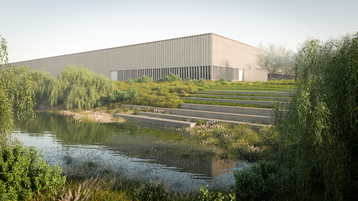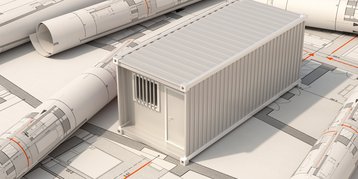Generative AI and other intelligent applications have become some of the biggest innovations of our era, offering staggering value and opportunity across a wide range of industry use cases. Yet, at the points where AI and data centers (the core facilities supporting massive compute requirements) intersect, these two digital powerhouses may be in unintended opposition.
Data centers and AI have, in many ways, grown up together; as new, data-hungry use cases emerged, data centers found ways to densify operations and deliver more power. In turn, AI found new ways to leverage that power, putting the industry on a cycle of progress and rising pressure.
Sustainability challenges are now the wrench in the works. Today, we’re all facing the fact that the very technology that data centers have helped advance is unavoidably causing problems for data centers’ operations and construction, forcing them to carve a new, green path for themselves – and for AI.
When Nautilus Data Technologies and Start Campus, the company responsible for developing the SINES Project (a 495MW data center campus) began their partnership in late 2023, they sought to solve this challenge.
The collaboration is spearheading new, scalable, sustainable industry standards that ultimately support high-density applications like AI while transforming the ways in which they’re operated. Despite these significant, positive strides, there is still a wide array of questions to answer at the intersection of AI and data centers.
As Newton famously professed, for every action, there is an equal and opposite reaction. Indeed, in AI’s case, that opposite reaction is potentially of greater consequence than the technology itself. What’s more, these consequences can become the very thing that prevents AI from full implementation and benefit realization – how can data centers offset the costs to protect value?
To highlight, AI's impact on data center sustainability and resource management measures is significant. These facilities already consume resources, from power to local natural resources, that are often shared with the communities in which they reside.
What’s more, data centers historically produce significant carbon emissions and create tremendous amounts of e-waste from the disposal of racks, computing equipment, monitors, circuits, and more. AI is only exacerbating these issues.
As Robert Dunn, interim CEO of Start Campus, notes, “We're all striving to find balance between addressing climate change and meeting the increasing demand for IT, especially with the AI boom.”
According to the International Energy Agency (IEA), data centers account for 1-1.5 percent of global electricity use. In 2021, global data center electricity usage was 220-320TW hours, which equates to approximately 0.9-1.3 percent of global final electricity demand. This is a 10-60 percent rise in data center energy use compared to 2015.
To pave the way toward a sustainable future, the industry must meet the challenges of AI in the data center with recognition, urgency, and innovations that are equal to the task.
Tackling the challenges of AI in the data center
AI demands even greater computing capacity, higher-capacity data centers, and more energy than legacy applications, all of which lead to greater environmental impacts. Yet, amidst these challenges, there is hope. There is a strong and growing emphasis on standards and consumer preferences for companies that embrace sustainability.
By uniting sustainability and the new high-density AI applications, we can pave the way for data center innovation with construction and operational breakthroughs. This approach embraces AI's higher demands and promotes sustainability, offering a promising path forward.
Historically, sustainability efforts were a corporate nod to investors and a small faction of society that prioritized these ideas. As time has passed, sustainability has become a critical planning factor, integrating sustainability, finance, and business strategy.
Part of the growing sustainability movement is due to impending rules and regulations; part is from societal pressure from those who put their dollars where their ecological priorities lie. Furthermore, part is corporate awareness that businesses must consider climate change in their business strategies, and part, we must believe, is genuinely altruistic.
Not your father’s data center
Existing data centers do not have the power or cooling capacity to accommodate a large quantity of generative AI infrastructure, and their resource consumption and waste output are not sustainable or nature-friendly.
New data center construction isn’t just accommodating AI, it’s building to embrace and accommodate the needs and innovations we haven’t even considered yet.
A recent report from JLL details that the construction of data centers in primary and secondary markets exceeds 5.3GW, as rising demand and already limited capacity push the wave of development forward. These new data centers have to address several critical elements that are impactful on their own, but together provide an environment required for AI, while tremendously boosting sustainability practices.
Innovators are creating next-generation data center blueprints that aim to deliver a multi-faceted sustainable infrastructure that’s scalable, one “byte” at a time.
Zero-consumption water cooling
Cooling is a primary energy hog in data centers – this is no secret. Adding the compute power and subsequent heat generated by AI applications turns a molehill into a legitimate mountain. This is of particular concern for outdated data center infrastructure.
You could argue that a large majority of data centers became effectively outdated the moment AI and other big data, high-compute applications became a reality, as air cooling with expensive chillers and cooling towers no longer suit new applications and sustainability requirements. The technology has outpaced the solution.
Moreover, these outdated cooling methods consume huge amounts of energy. It’s like trying to power a Tesla with a hamster wheel, with greenhouse gasses escaping out the wazoo.
Enter zero-consumption water cooling innovation. Easily integrated into data center construction, the technology uses less space and creates a heat sink for hot, dense AI applications. The water cycles back to the source, which can be a natural or manmade body of water, civil water infrastructure, or an industrial water source – without adding or subtracting anything. Dunn states, “People are moving away from air-based cooling because it reaches a threshold where you can't properly cool higher-density machines.”
Air cooling can support up to 40kW of computing capacity in a rack, while water cooling can support up to 200kW per rack. Less expensive and environmentally friendly cooling methods enable data centers to densify AI clusters to do more in less space. As land has become scarcer and more costly, densifying data centers also saves land resources.
Prefabricated construction
Now imagine if sustainability-forward data centers could be constructed as efficiently as snapping LEGO blocks into place, because they can (kind of)! Data centers can be built smarter with less waste using prefabricated construction and integrating zero-consumption water cooling from the jump.
These build-to-suit methods pull construction into the factory, making it easier to control quality and repeatability and continue to innovate from an operational supply chain perspective.
Prefabricated construction can incorporate advanced zero-consumption water cooling. The cooling system is placed under a vacuum in the building's white space, keeping it out of the way and protecting sensitive equipment from potential water damage. Think faster time to deployment and customizable opportunities for seamlessly meeting a more sustainable future.
Built-in future-proofing
Obsolescence is one of the most important factors when building a data center. With technology changing so quickly, a new data center has to be ready to flex and grow with changing demands. Modular prefabricated construction enables you to quickly scale your installation as demand increases, future-proofing your data center.
Building greener
The US Green Building Council designs its LEED building standards to provide building guidelines that save costs, promote health for inhabitants and the environment, and offer ESG benefits. Over 186 countries and territories recognize LEED certification.
Prefabricated building makes it easier to standardize building and material specifications that meet or exceed LEED standards, boost sustainability, and evolve as more environmentally friendly materials and processes emerge.
Renewable energy
The new breed of data centers is taking advantage of renewable energy options. Renewable energy saves costs and protects the company from energy price fluctuations that usually only go one way – up. As Patrick Quirk, CTO of Nautilus Data Technologies, underlines, “One of the things that gets lost sometimes in the sustainability discussions is what is really at the heart of it: Sustainability is driven by efficiency.”
Backup generators are critical for the continuation of service, and most today run on diesel fuel. The new data centers also use renewable energy sources such as hydrotreated vegetable oil (HVO), also called green diesel or renewable diesel, for a more environmentally friendly fuel choice for backup generators because it burns cleaner than petroleum-based diesel.
Nautilus EcoCore: Innovation equal to the task
To bridge the gaps between density, sustainability and operational efficiency, Nautilus created EcoCore, a foundational data center infrastructure product that answers the demands and challenges of an industry as integrated into society as indoor plumbing and electricity. This versatile platform provides sustainable, scalable, and efficient infrastructure to meet hyperscale and other data center operator requirements.
One facility is already in operation in Stockton, California, and Nautilus is partnering with Start Campus in Sines, Portugal: EcoCore cooling, a zero-water consumption technology, will be deployed in Start Campuses’ first 16MW data center.
This innovative cooling solution is specifically designed to accommodate high-density, liquid-cooled servers, ensuring optimal performance and energy efficiency, sharing both companies’ vision and commitment to data center sustainability.
The EcoCore infrastructure enables Start Campus to work with the end-users to provide a wide range of rack-level cooling solutions, from rear door heat exchangers to direct-to-chip and immersion cooling, depending on their needs and preferences. With EcoCore, the stage is set for a more eco-conscious, sustainable future that network operators can rely on when catching the AI wave.
More from Start Campus & Nautilus
-
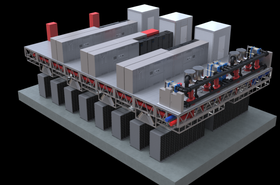
Nautilus launches new modular data center offering
First deployment to be at Start's campus in Portugal
-
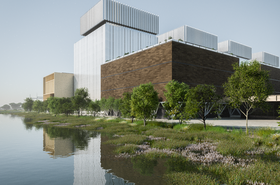
Start Campus to use Nautilus' cooling tech at Sines Campus in Portugal
Water-cooling specialist to license tech to 495MW campus development
-
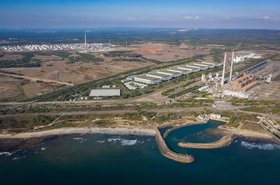
Start Campus breaks ground on 495MW Sines 4.0 data center project
Davidson Kempner-backed project starts development on first 15MW facility


